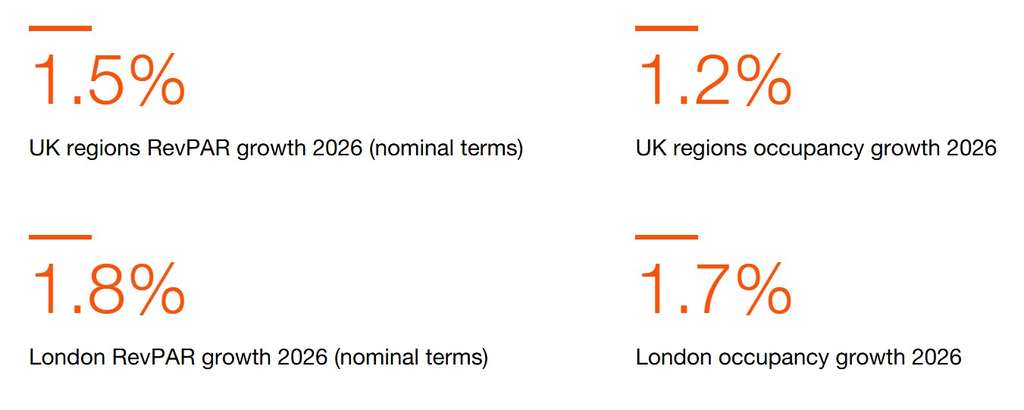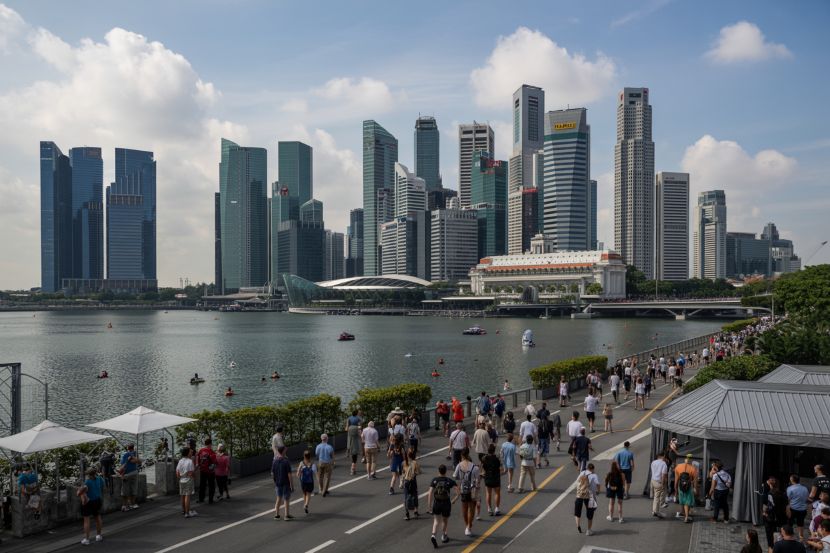читайте также
 Vietnam Struggles With Severe Flooding: Deaths Reported, Tourists Trapped
Vietnam Struggles With Severe Flooding: Deaths Reported, Tourists Trapped
 PwC: UK Hotel Market Remains Resilient in 2026 — Time for Innovation, Efficiency, and Strategic Growth
PwC: UK Hotel Market Remains Resilient in 2026 — Time for Innovation, Efficiency, and Strategic Growth
 Private Jet Rentals Redefine Luxury Travel: The Emerging Trend of 2025
Private Jet Rentals Redefine Luxury Travel: The Emerging Trend of 2025
 Formula 1 Grand Prix Brings Singapore’s Hotel Market to Record-Breaking Heights in October 2025
Formula 1 Grand Prix Brings Singapore’s Hotel Market to Record-Breaking Heights in October 2025
 Austria’s Real Estate Market Accelerates: Sales Up Nearly 14%
Austria’s Real Estate Market Accelerates: Sales Up Nearly 14%
 Cyprus Real Estate: Prices Rise, Returns Fall
Cyprus Real Estate: Prices Rise, Returns Fall
Analytics / Research / Ratings / USA / China / Germany / Japan / United Kingdom / France / Italy / Canada / Russia 29.10.2025
Top 25 World Economies 2025: Who Shapes Global Growth

Photo: Unsplash
The global economic landscape remains stable, although the balance of growth centers is gradually shifting. In the updated Investopedia ranking “The Top 25 Economies in the World”, the leading positions are held by the United States, China, Germany, Japan, and India, while the share of developing countries in global GDP continues to increase. The ranking is based on IMF data on nominal GDP, expressed in U.S. dollars.
The United States maintains a strong leadership position in the world economy — its nominal GDP in 2025 reaches 30.62 trillion dollars. The economy relies on a powerful services sector — finance, real estate, insurance, healthcare, and information technology. High labor productivity, developed infrastructure, and the role of the dollar as a global reserve currency ensure resilience even amid slower growth. At the same time, internal challenges persist — rising social inequality, growing healthcare costs, and aging infrastructure, all of which increase the need for investment and structural reforms.
China’s economy has undergone a remarkable transformation over the past decades: in 2000 it ranked only sixth, by 2010 it had climbed to second place and has remained there since. Its GDP is estimated at 19.4 trillion dollars, making it the largest economy in the world by purchasing power parity — about 41 trillion. Economic expansion is driven by exports, domestic consumption, and large-scale state modernization programs. However, growth is slowing: the population is aging, the export-oriented model requires restructuring, and environmental constraints put pressure on industry. Significant challenges are also evident in the real estate market.
Germany remains the largest economy in Europe and the third-largest globally, with a nominal GDP of about 5 trillion dollars. Its model is based on industrial exports — primarily automobiles, machinery, and chemicals — which underpin the country’s trade balance. A strong manufacturing base and skilled labor force sustain competitiveness even amid recent energy and logistics shocks. Yet demographic decline, rising costs, and dependence on external markets create systemic risks. To maintain growth, Germany must accelerate digitalization, diversify energy sources, and adapt industry to the green transition.
Japan ranks fourth with a nominal GDP of about 4.28 trillion dollars and stands among the most technologically advanced economies. Its industry focuses on exporting high-tech products — cars, electronics, and robotics. Long-term investment in innovation and education, as well as close cooperation between the state and private sector, play a key role in its stability. Yet the country faces chronic labor shortages, an aging population, and high dependence on imported energy, which constrain growth potential. Despite these challenges, Japan’s economy shows low unemployment, a stable currency, and strong positions in global supply chains.
India rounds out the top five with a nominal GDP of about 4.13 trillion dollars and more than quadruple that figure by purchasing power parity. Over the past two decades, the country has made a notable leap, transforming from an agrarian-industrial base into one of the centers of global expansion. Key growth drivers include the services sector, information technology, and digital public administration. A young population and a vast domestic market generate steady demand, making India the fastest-growing economy among the top five. However, regional inequality, bureaucratic barriers, and underdeveloped infrastructure may slow further progress.
In sixth place is the United Kingdom, with a GDP of about 3.96 trillion dollars — it relies on finance and services, though growth has slowed since leaving the EU. France’s economy (3.36 trillion) combines state regulation with an advanced industrial base but faces high debt and significant social spending. Italy (around 2.5 trillion) struggles with regional disparity and sluggish growth despite strong exports in machinery and design. Russia holds a comparable GDP, driven by energy and raw materials under persistent sanctions. Canada, with 2.28 trillion, remains stable thanks to its resource sector, manufacturing, and deep integration with the U.S. economy.

The second tier includes Brazil, Spain, Mexico, South Korea, and Australia — economies marked by diversification and solid domestic demand. Brazil is Latin America’s largest economy, supported by agriculture and commodities. Spain is recovering through exports and tourism. Mexico expands industrial exports through close U.S. trade links. South Korea leads in electronics and automotive technology, while Australia combines resource exports with a growing service sector.
Ranks sixteen to twenty-five include Turkey, Indonesia, the Netherlands, Saudi Arabia, Poland, Switzerland, Taiwan, Belgium, Ireland, and Argentina. Turkey strengthens its industrial and construction sectors, while Indonesia sustains steady growth through domestic consumption. The Netherlands and Belgium act as key European logistics hubs. Saudi Arabia is diversifying its economy to reduce oil dependence. Poland has surpassed the 1 trillion mark, establishing itself as an industrial center in Eastern Europe. Switzerland and Ireland lead in GDP per capita, and Taiwan remains a global semiconductor hub. Argentina closes the list, combining vast resources with chronic financial instability.
The top twenty-five economies generate over 90% of global GDP. While the leaders remain unchanged, the balance of power is gradually leveling out. Developed countries retain technological and financial dominance, yet fast-growing markets — India, Indonesia, Poland, and Saudi Arabia — increasingly shape investment flows and production. The world is becoming multipolar: growth, investment, and innovation now emerge beyond traditional centers of power. This transitional phase defines a new dynamic in which economic influence depends less on scale and more on adaptability and the quality of internal reforms.





